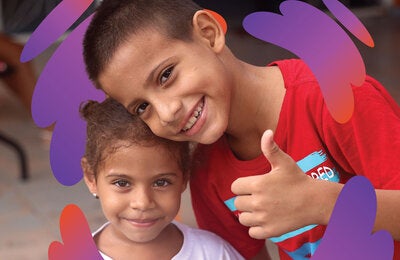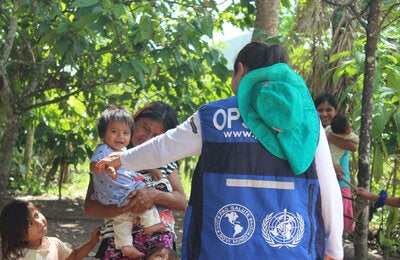
Washington D.C, 1 October 2019 (PAHO/WHO) – Ministers of health participating in the second day of the 57th Directing Council of the Pan American Health Organization (PAHO) agreed on a collective approach to eliminate more than 30 communicable diseases and related conditions in Latin America and the Caribbean by the year 2030.
The PAHO Disease Elimination Initiative: A Policy for an Integrated Sustainable Approach to Communicable Diseases in the Americas targets a list of diseases considered to be prime candidates for elimination, including HIV, syphilis, hepatitis B and C, schistosomiasis, trachoma, Chagas disease, malaria, cholera, human rabies and others.
“Beyond the human cost on individuals, families and communities, communicable diseases also have a huge economic impact on health systems,” said PAHO Director Carissa F. Etienne. “A collective regionwide approach will enable countries to consolidate their efforts and resources to prevent epidemics and ultimately to put an end to these diseases once and for all.”
The initiative recognizes that disease elimination does not depend solely on the health sector but requires the engagement of other actors, both inside and outside government, with clear definition of roles and responsibilities.
Launch of report on Health Equity in the Americas
The second day of the 57th Directing Council also saw the launch of Just Societies: Health Equity and Dignified Lives, a groundbreaking report from the Pan American Health Organization’s (PAHO) Commission on Equity and Health Inequalities in the Americas, which proposes priority goals across a range of action areas to reduce inequities in health (view the press release).
As a result of these structural inequities, certain groups in the Region of the Americas continue to face inequalities in health both within and among countries, by reason of their socioeconomic position, ethnicity, gender, sexual orientation, disability status, or being migrants, the Commission says in its report. These inequalities start at the beginning of life: in Bolivia, for example, the under-5 mortality rate for indigenous children is more than three times higher than that of non-indigenous children. The inequalities persist until the end of life; for example, life expectancy for women in Haiti is just 66, while for women in Canada it is 84.
The recommendations as a whole propose a renewed focus on groups most left behind, a whole-of-government approach to addressing inequality, and collaboration with other sectors beyond health.



